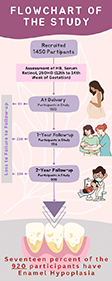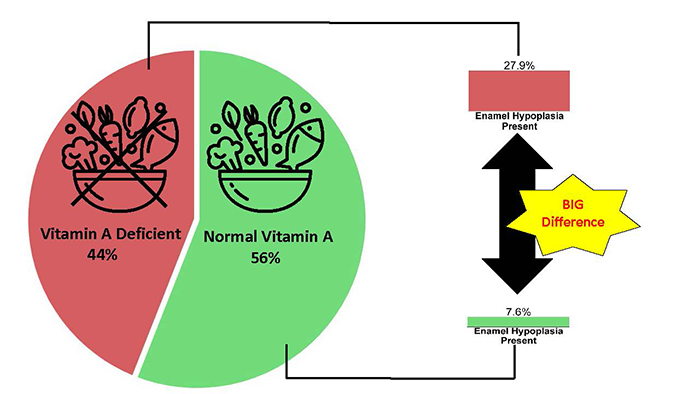News
Discovery of Association Between Maternal Vitamin A Deficiency and Dental Defects: A Springboard for Proper Nutrition Programmes for Women of Childbearing Age

Assoc Prof Stephen Hsu (left) and Mr Clement Lai analysing the data.
Have you ever wondered how a mother's nutrition during pregnancy impacts a baby's teeth?
According to the World Health Organization (WHO), maternal vitamin A deficiency (mVAD) contributes to mothers’ mortality and unhealthy outcomes in pregnancy and nursing. Even mild mVAD increases the risk of night blindness and infection of children's breathing and digestive systems. It also reduces the likelihood of recovering from severe illnesses. Importantly, a recent study by Assoc Prof Stephen Hsu’s team discovered a significant link between mVAD and defects in the outer layer of teeth. These defects are enamel hypoplasia (EH), which often appear as pits and/or grooves on the outer surface of teeth. These can increase plaque build-up and make teeth more prone to develop cavities.
The study involved 1,450 pregnant women in a rural Indian community. Their health indicators, such as maternal serum retinol, serum 25-hydroxyvitamin (25OHD) and haemoglobin were obtained from medical records and surveys (see Figure 1). Participants’ social and economic status were also documented and their oral health was assessed every six months from birth to age two. The study discovered that a shortage of vitamin A in mothers is connected to EH in their children's teeth (see Figure 2).
 Figure 1: Flow Chart of the Survey and its Findings (click image to enlarge) |
 Figure 2: Absence of Vitamin A and its Effect on the Development of Enamel Hypoplasia |
“Our team is privileged to learn from the villagers and provide the first direct evidence of the mVAD-EH link. Besides the joyful fulfilment of social obligations in global health, I hope policymakers will be more aware of the nutritional needs of women of childbearing age in underserved communities because of our findings,” shared Assoc Prof Hsu.
Assoc Prof Hsu believes that future studies in this area could be directed at developing cost-effective strategies for preventing health problems of child-bearing women and young children. These include administering vitamin A supplements during pregnancy and breastfeeding, modifying behavioural and cultural dietary preferences that lack sufficient vitamin A, and establishing monitoring mechanisms to oversee individuals' vitamin A consumption.
The study was published in the Journal of Dental Research in December 2023. Read more about it here.

